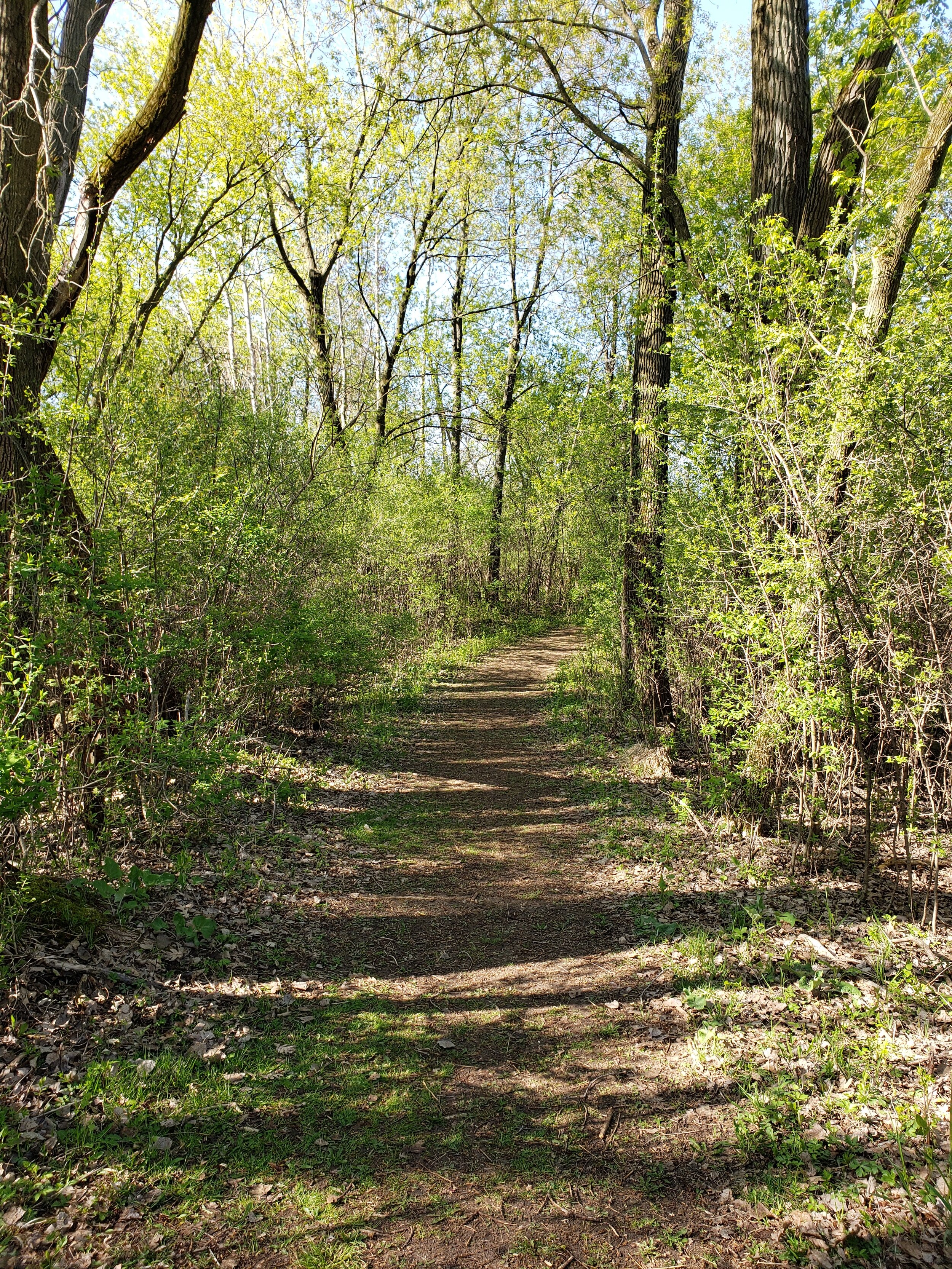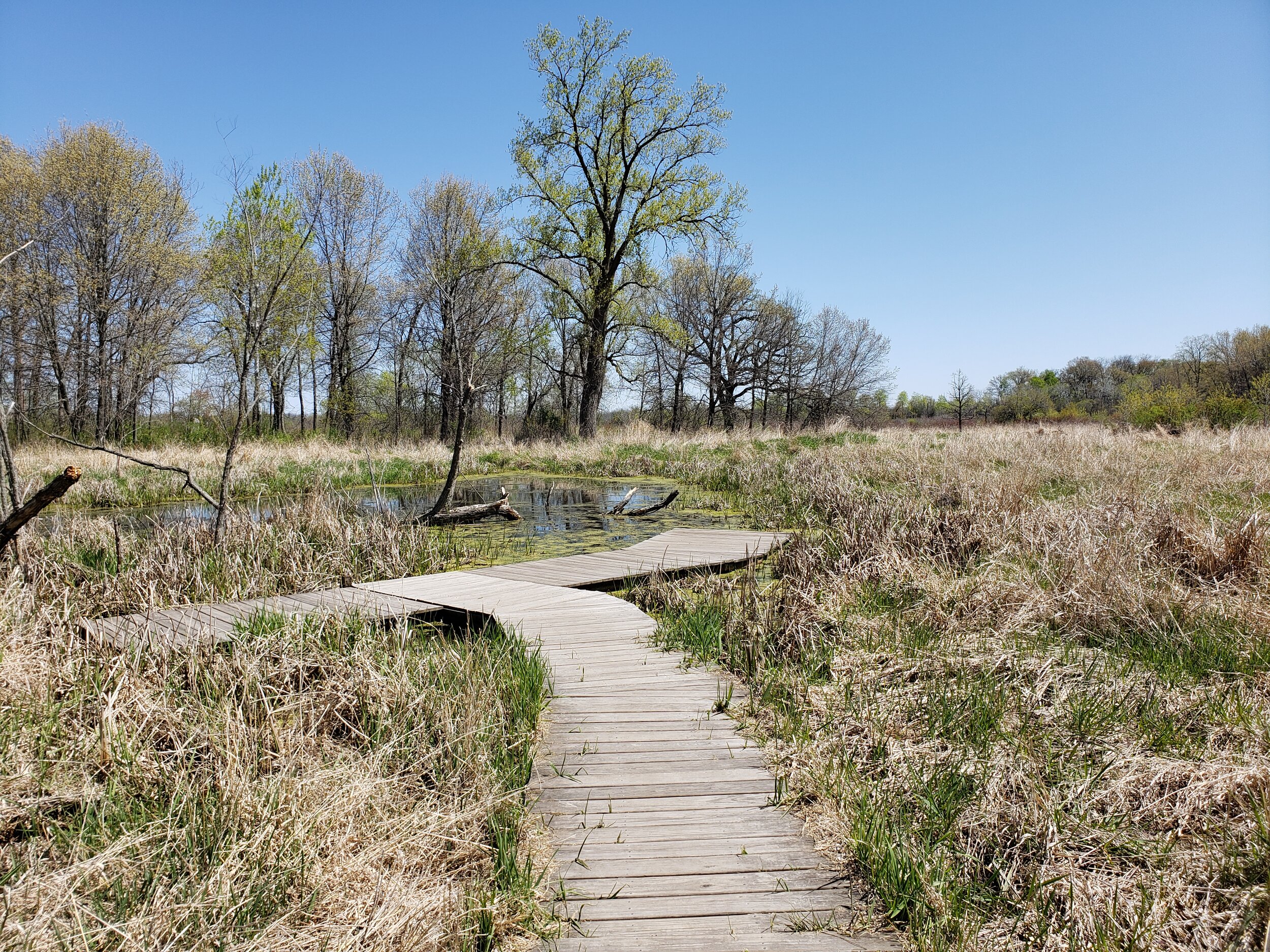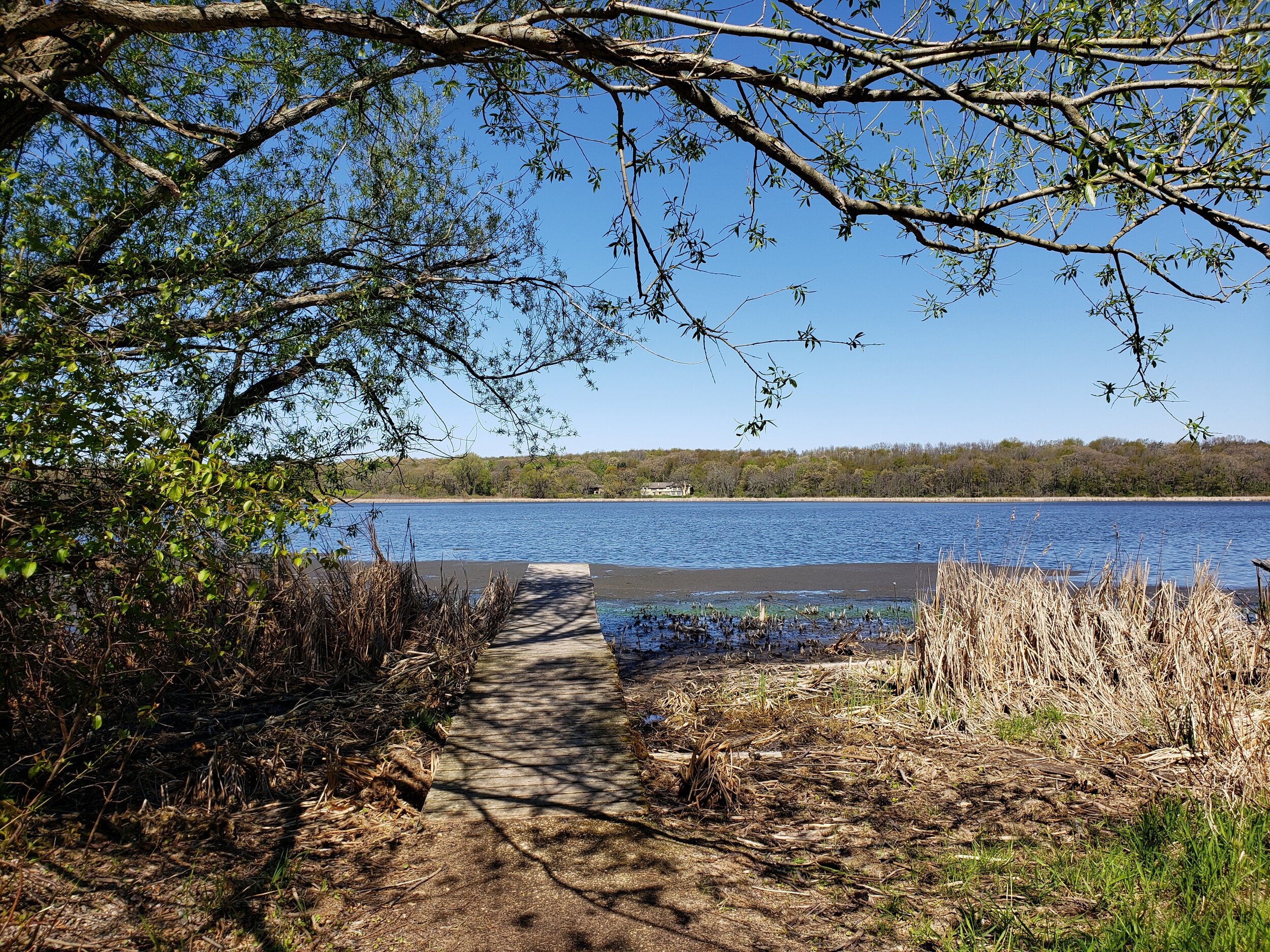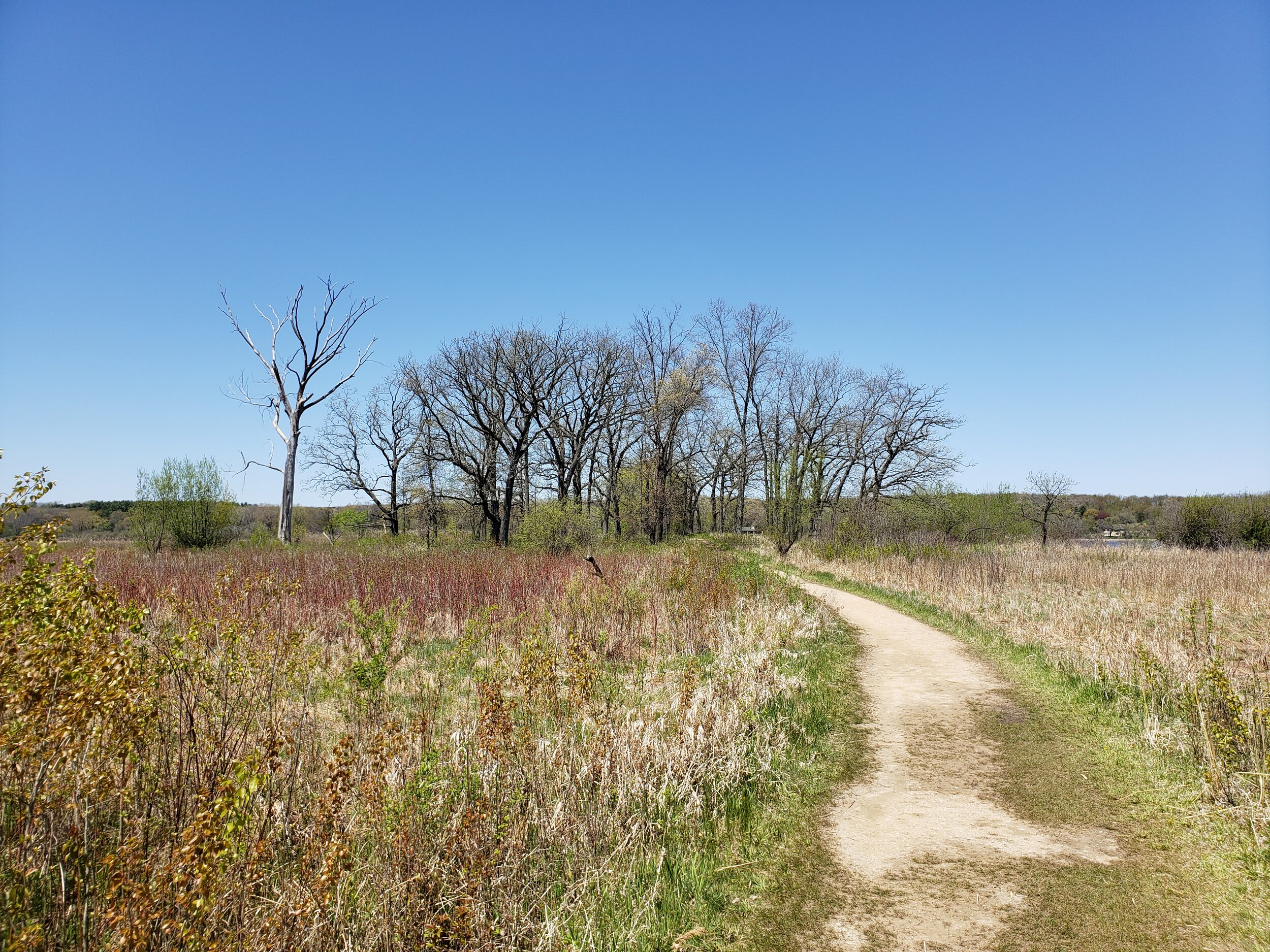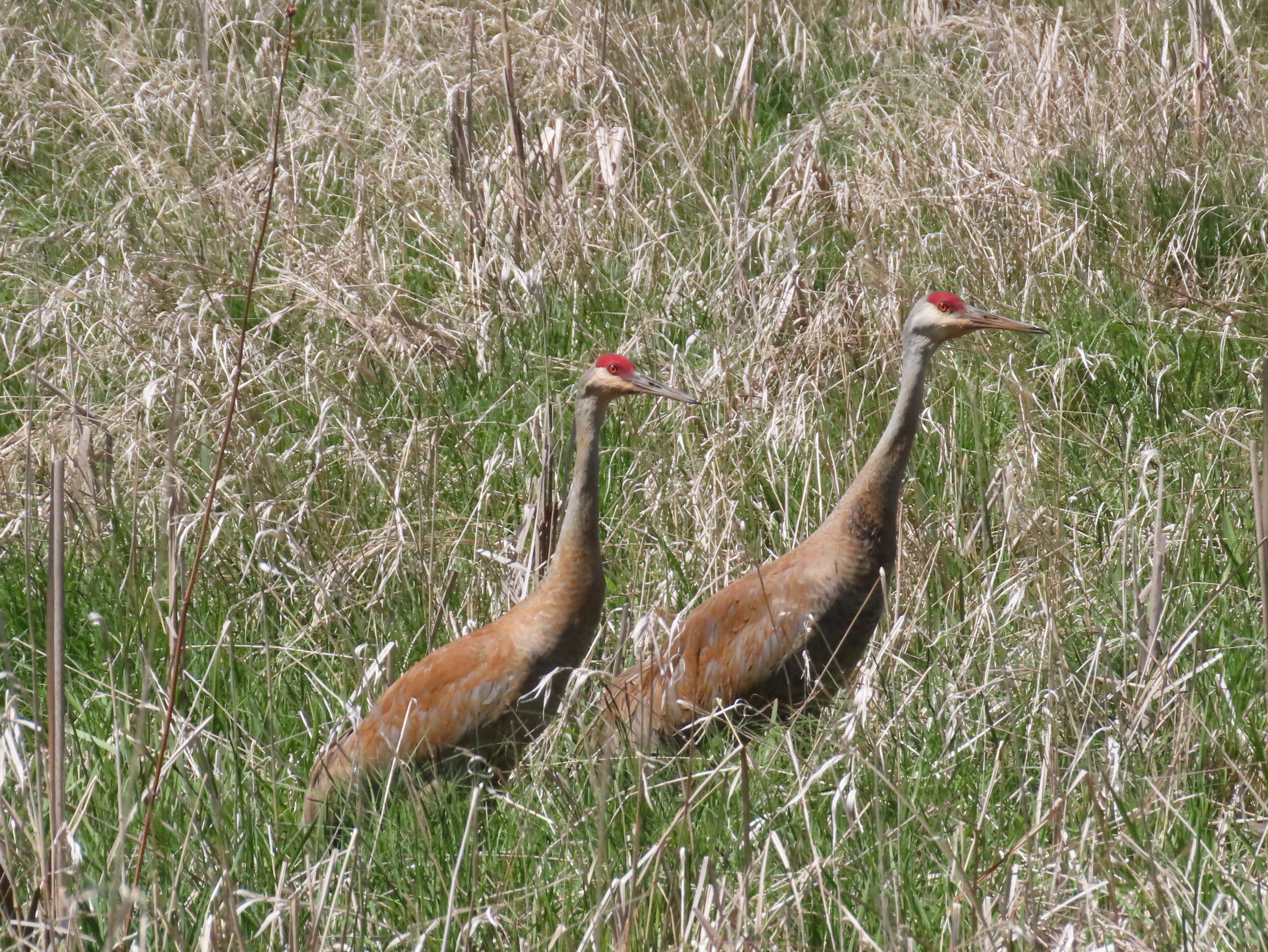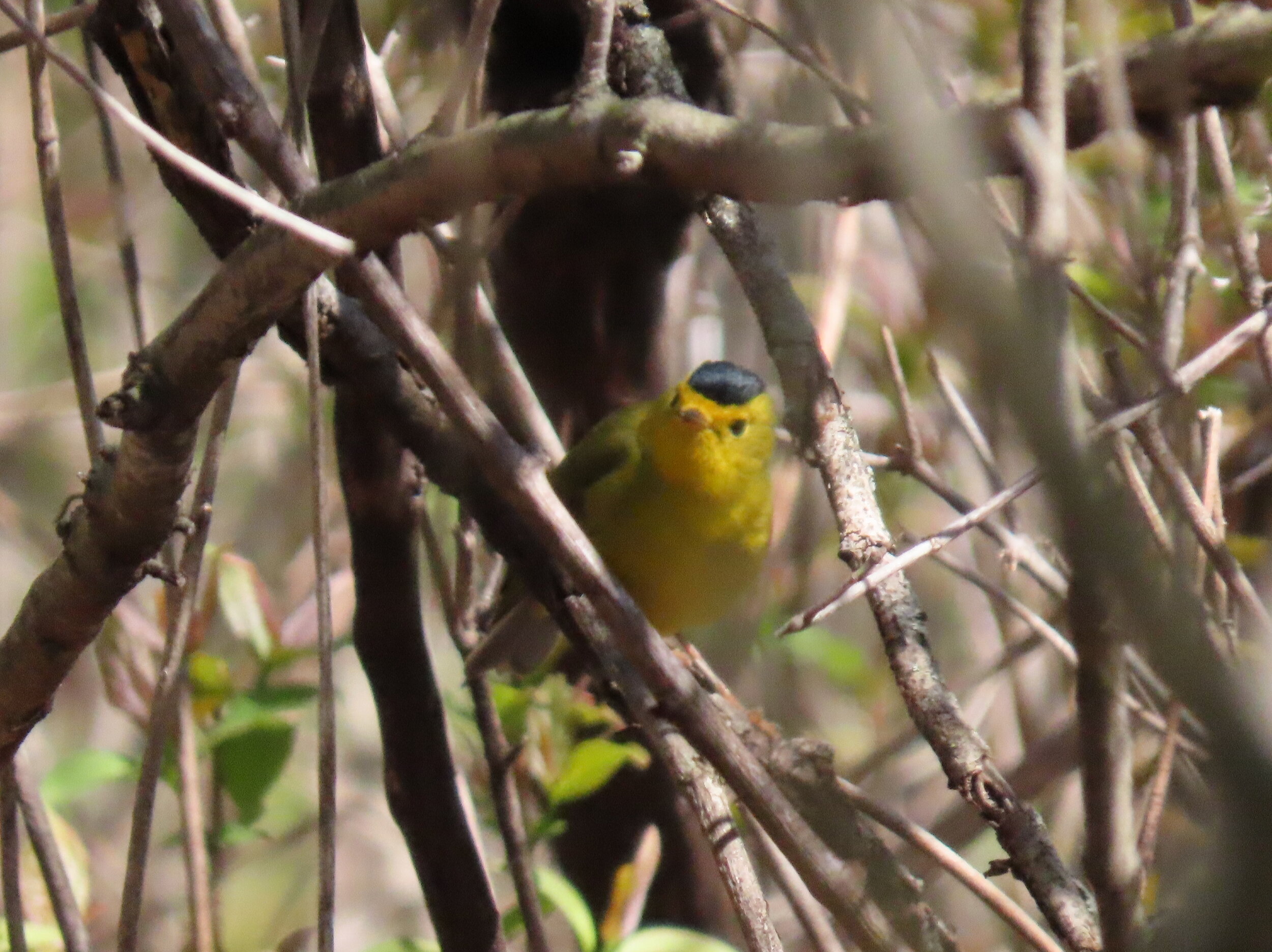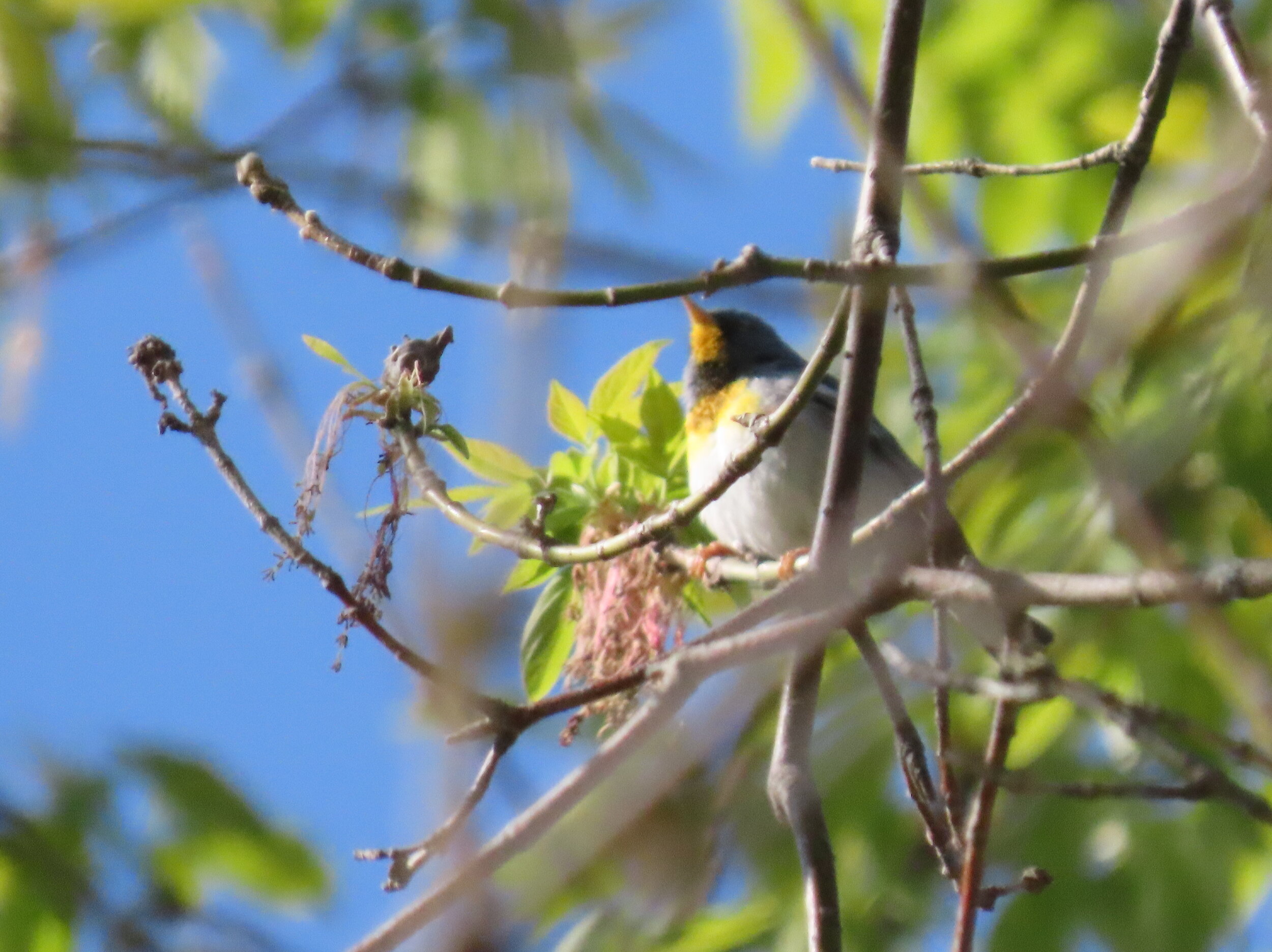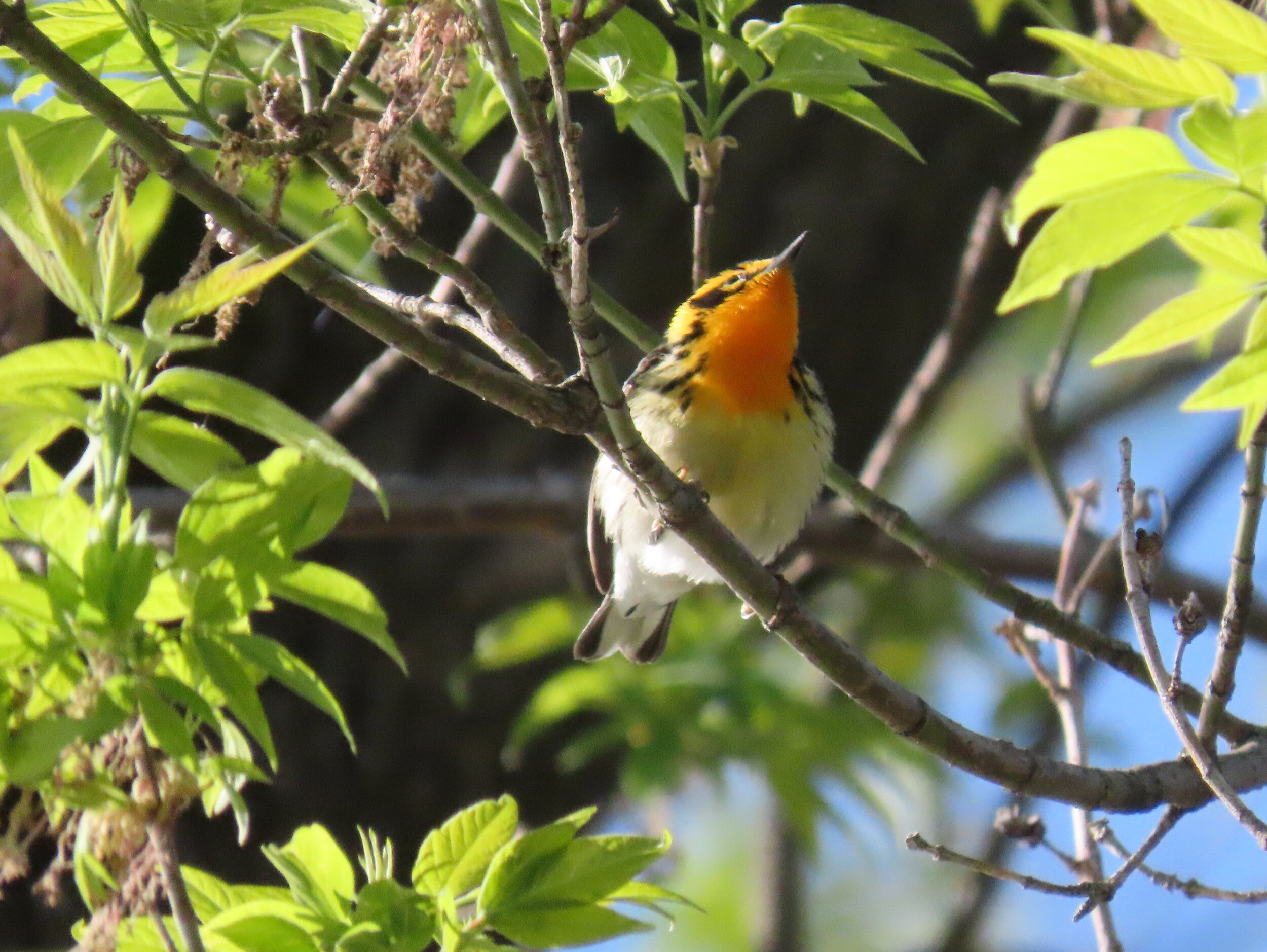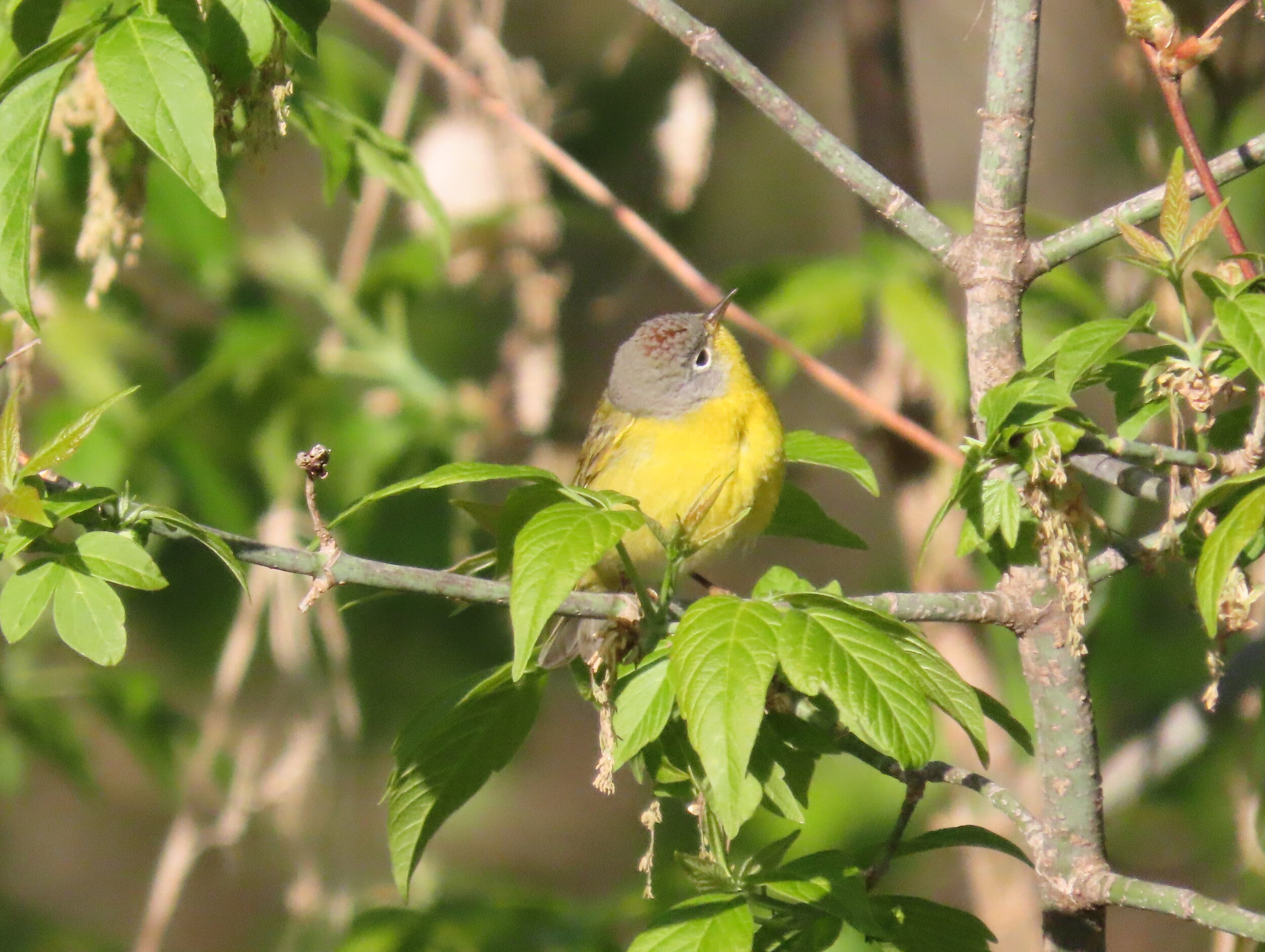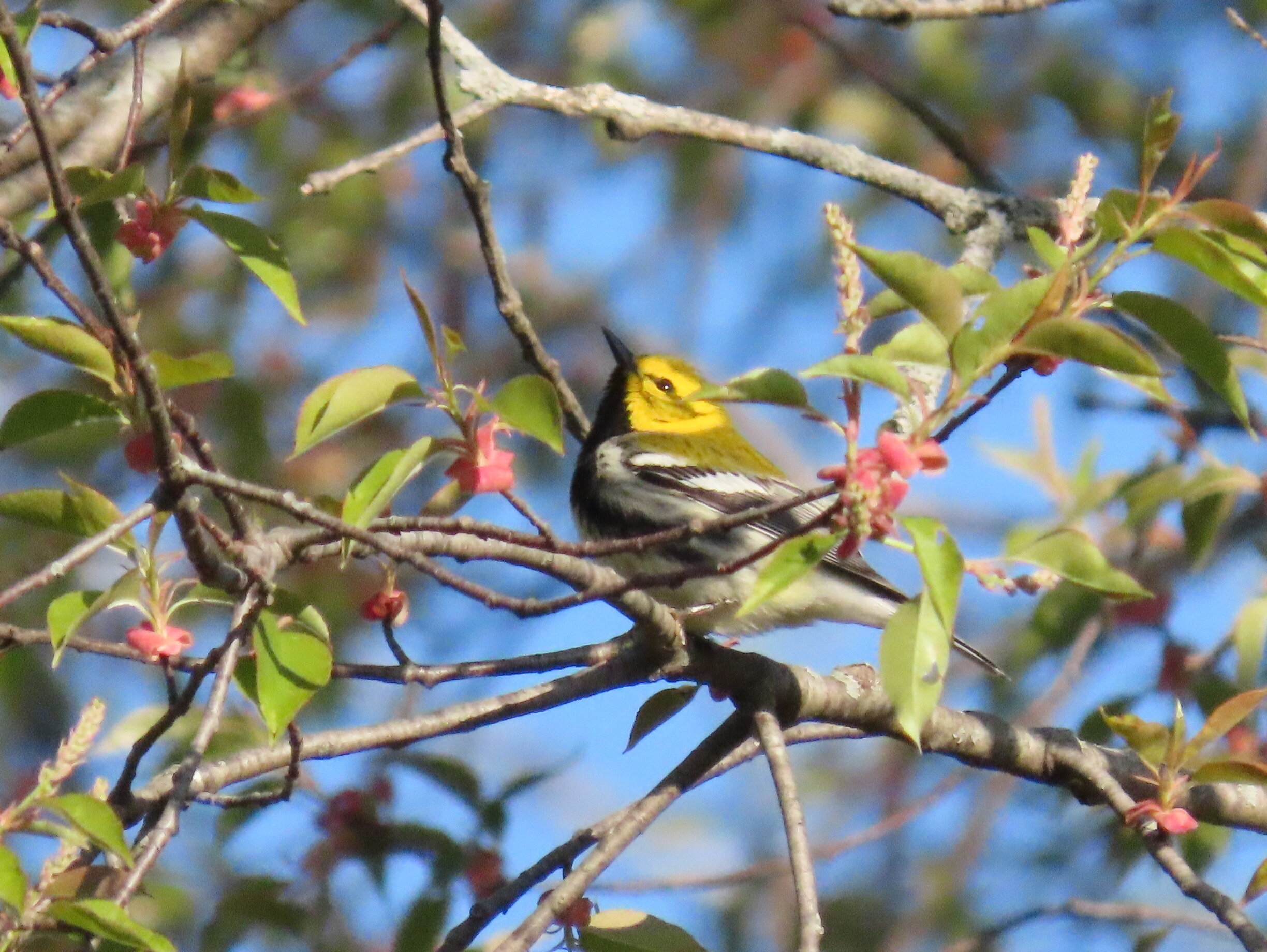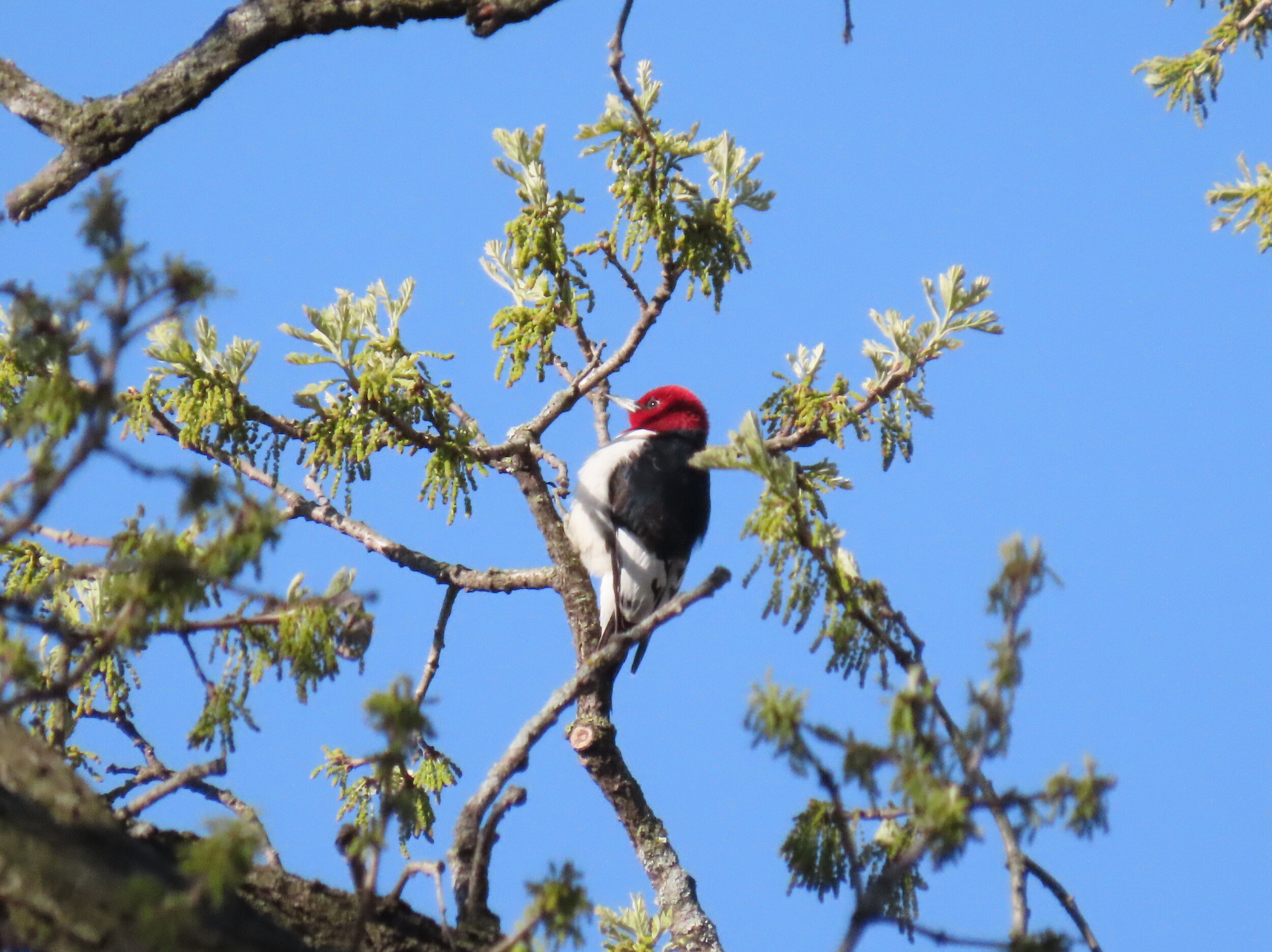This past Tuesday, the Madison Audubon office staff participated in the Natural Resources Foundation’s Great Wisconsin Birdathon, a walk-a-thon-style fundraiser where the goal is not about the miles you walk, but the number of bird species you can spot in a single day of your choosing.
The Great Wisconsin Birdathon is the largest fundraiser for bird conservation in Wisconsin and a yearly event that unites bird-loving folks all across the state. The COVID-19 pandemic has meant that birdathon-ing may look quite different this year, but it doesn’t have to come at the cost of connection. In fact, the Natural Resources Foundation is encouraging you to connect more than ever—to connect with the birds you may not have noticed before, to connect with local landscapes that may prove unexpectedly full of life, and to connect (safely, distantly, virtually) with family and friends as you bring awareness to Wisconsin’s birds.
In this week’s Entryway to Birding blog, I’m going to tell you about our staff’s Birdathon day, which was also my first time participating in the Great Wisconsin Birdathon. I’ll share my experience of connection and give you some pointers about how you might plan your own Birdathon day too!
A yellow warbler perches in the branches of a budding tree. It was one of the first warblers I saw during our Birdathon. These bright balls of sunshine sing “Sweet, sweet, I’m so sweet!” And oh, don’t they look it too? Photo by Caitlyn Schuchhardt
Team “Cheeseburger, Cheeseburger” Relays at the Marsh
Birding together as a group wasn’t an option this year, so the Madison Audubon office staff had to get a little creative in how we went about planning our Birdathon day. We settled on an option that would allow us to maintain social distancing, but still connect through a shared experience: we would each bird at Cherokee Marsh, but at different times throughout the day.
This gave us a nice advantage because, as you know, birds are on constantly on the move. While they may hang out in a particular area throughout the day, they may not always be visible when you want them to be. Had we all gone birding together at the same time, we could have missed a lot of species! But with our relay, we were able to maximize the species we saw and we each walked away with our own unique birding experience at the marsh. We may not have all seen the same warblers or heard the same sparrows, but we collectively gathered a list that represents the fullness and life of a gorgeous conservation park.
Check out some of the pictures I snapped of my views on Tuesday morning:
When our team members weren’t out birding at the marsh, we each checked out some other locations to see what variety of birds we may find on such a beautiful day. Splitting up the team played out in our favor and resulted in a bird-packed day full of songbirds, shorebirds, and all the birds in between! We ended with an impressive 121 species on our list. (Though we somehow managed to miss finding a single owl!)
More Connected Than Ever
A sandhill crane pair at Cherokee Marsh. Photo by Caitlyn Schuchhardt
Long before I was a birder, I’d go walking and exploring at Cherokee Marsh. I loved the sunrises, the sunsets, the spring blooms, the marsh’s boardwalks, the spring peepers. I’d hear the ethereal call of sandhill cranes echo through the marsh, the hooting of a great horned owl in the evening, and the persistent conk-la-reeeeee of the red-winged blackbirds guarding their territory.
I’m sure I noticed another bird or two, but at the time, I hadn’t been going out with birds in mind. I hadn’t yet realized the world that was waiting for me. (Oh, if I could go back and start sooner!)
When I went to Cherokee Marsh on Tuesday morning to kick off my portion of the Birdathon, I found myself in a warbler wonderland unlike anything I’d experienced before. There was a small chill in the air, but the sun was quickly warming up the trees and the insects that live in them. Because warblers are insect-eaters, this boded well for my morning.
I barely made it ten feet down the path before I came to a stop. There was so much flitting around that I could barely keep my binoculars on all the action. (It’s a good thing the Birdathon isn’t a walk-a-thon—warbler watching involves a lot of standing still!) I started tallying up the warbler species I was seeing: yellow warbler, yellow-rumped warbler, black-throated green warbler, black-and-white warbler, Wilson’s warbler, palm warbler, blackburnian warbler, Nashville warbler, northern parula … the list keeps going!
Check out this selection of warbler photos that I took on Tuesday:
Amidst all the warbler action, I saw a robin building her nest; a downy woodpecker pecking at a hole; and a house wren poking up from the brush, chattering away. I could hear sandhill cranes call in the distance, and a strange bird call that turned out to be a blue jay (those mimickers get me every time!).
Throughout all this, I couldn’t help but think: How could I have missed this? What wasn’t I seeing, for all those years?
This wasn’t my first spring morning at Cherokee Marsh by far, but it was one of my first spring mornings there as a birder. The marsh hadn’t changed—but my awareness of the world of life it contains had. All those birds, all that life, all that beauty—it was always there, waiting for me to see it.
My Birdathon experience was a day of deep appreciation for not only birds, but for birding—a hobby that continues to reveal a whole new world of life and beauty around me. I would love for all of you reading to be able to share in that same joy of discovery, so I encourage you to consider participating in this year’s Great Wisconsin Birdathon, which runs from April 15th to October 15th.
It’s Your Turn! Tips for Planning Your Birdathon
If you’re thinking that you’re not ready to participate in the Birdathon just yet, that maybe you’re too new to birding … well, you couldn’t be further from the truth! The Great Wisconsin Birdathon is for everyone, regardless of skill level. The joy of this fundraiser—like birding itself—is that you have the freedom to make it your own, to do it your way. You don’t have to set some crazy high species goal. You don’t have to travel far, or even travel at all.
What matters is that you’re able to enjoy and appreciate the wonderful birds that share a home with you in Wisconsin. If you’re able to do some fundraising and collect some small donations in the process, that’s awesome! Every little bit helps the birds. But don’t let any fears about your skill or your level of commitment deter you. You’re joining a collective group of bird-lovers across the state and we’re all in this together because we care about protecting birds.
The Great Wisconsin Birdathon website has many excellent tips for how you can participate safely and maintain social distancing during the pandemic. They’ve suggested many creative options for how you and your team (if you choose to recruit some friends!) can bird safely. Consider some options like these:
Bird From Home: Have you ever been curious about the number of species you can find from your yard? This is your chance to tally ‘em up! (Pro tip: See if you can convince your neighbors to join your team so you can get a collective neighborhood block count going!)
Bird Local: If you wanna get out to enjoy the spring weather, feel free to visit some local parks and conservation areas. If you have a team, think about how you might split up to cover more ground—you could each bird at your favorite location, or you could bird separate areas within a larger conservation park.
Relay Birding: The Madison Audubon team took advantage of this fun option and it worked out well! If you’ve got a team of birders, choose a location to bird in shifts throughout the day!
There’s a few warblers you may not find in tree tops. This northern waterthrush was perched above a small stream—as their name implies, they like places with water! Photo by Caitlyn Schuchhardt
Maybe you’ve got a competitive edge and want to see as much as possible in one day. Here’s some tips for you:
Warblers are most active in the mornings and evenings. I personally have the best luck finding a good variety from 7am-10am. Seek out locations where the morning sun will hit and warm up the insects—that’ll be where the warblers will be catching their breakfast! Also seek out “edges” where different habitats meet. Oddly enough, I see a lot of warblers in trees along the edges of parking lots at conservation parks and natural areas.
Aim for a variety of habitats —where you find songbirds is going to be different than where you find shorebirds and waterfowl. And don’t forget your backyard birds! You can find all the warblers you like, but you’ll still be one species short if you overlook the house finches in your yard.
Use eBird to your advantage. I haven’t talked too much about eBird on our blog yet (just wait, it’s coming!) but there’s no better time than now to start exploring bird sightings in your area and checking out local “hotspots” or destinations where you’re likely to find lots of birds. If you have a “target species” (i.e. a bird you’d really like to find) then eBird can help point you in the right direction.
Coordinate with your family and friends! Form a team and work together from a distance. If you’re in Madison but your friend lives in Milwaukee, team up! You’ll likely have a wider selection of birds to find. Then, get together for a phone call or video chat to recap your day and connect over the gorgeous birds you saw.
I couldn’t stop raving about this gorgeous red-headed woodpecker. What bird would you be most excited to see? What gorgeous beauty might you rave about to your Birdathon team at the end of the day? Hop on the Birdathon train and find out! Photo by Caitlyn Schuchhardt
You can put as much effort into your Birdathon day plans as you like. Have fun, enjoy the birds, and be proud of supporting one of Wisconsin’s largest fundraisers for bird conservation that is helping #BringBirdsBack.
(Bonus tip: If you’ve been working on Madison Audubon’s May BIRDO Challenge, planning and participating in the Birdathon may help you check off several boxes in fell swoop! Don’t forget to post a picture of yourself with your BIRDO card on social media for a chance to win some Madison Audubon gear!)
Happy Birdathon-ing, and I’ll see you next week!
____
Caitlyn is the Communications and Outreach Assistant at Madison Audubon. She’s crazy for birds because they changed her life. She’ll be back next Monday with some tips and tools for birders, new and experienced! Between now and then, she’d love to hear about the birds you’re seeing and hearing. Leave a comment below or email to drop her a line!



